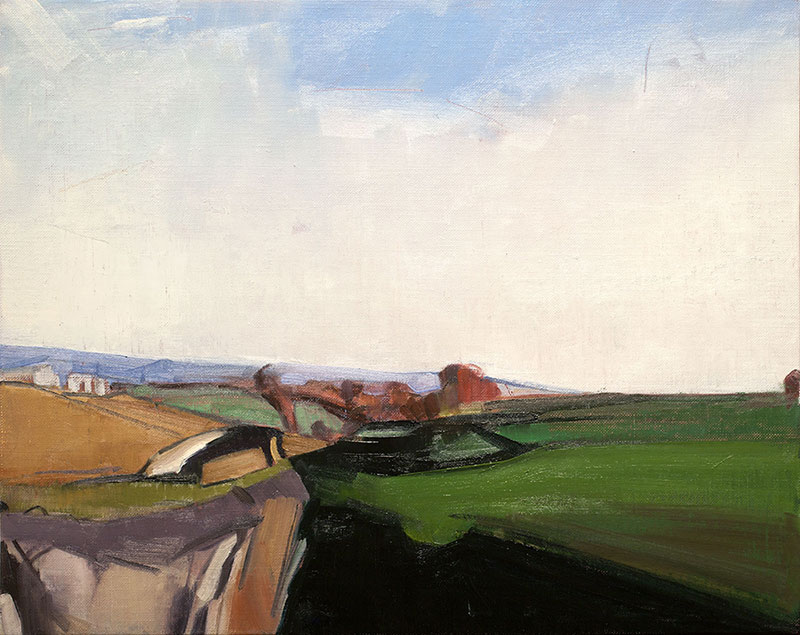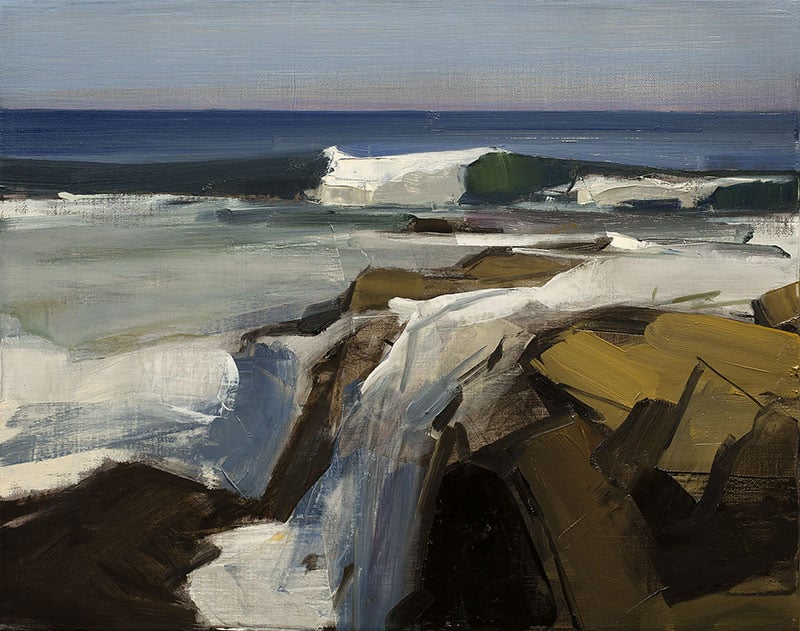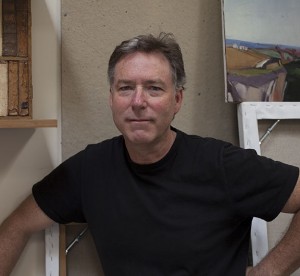Aesthetic Couture and the Great Art Fraud
Artist Essay by Christopher BensonIn Shakespeare’s Hamlet, the character Polonius offers the following life advice to his son Laertes: “This above all: to thine own self be true, And it must follow, as the night the day, Thou canst not then be false to any man.” This is also a particularly wise warning to the aspiring young artist. “Style” in a work of art—while often a deliberate creation of its maker—is also, on a deeper level, an imprint of his or her inherently true personality, as well as of the true character of the time and place in which that work was made.
Every artist struggles with this problem. We see great art and want to emulate it. But try as we might to paint, photograph, sculpt, film, write, or compose in this way or that (and as students we do try to make works that resemble those of some master whom we admire), we can never quite expel the signatures of our own identity and place. It is not necessary then to try so hard to look contemporary, because if we are being honest, that part will take care of itself. The process of maturing as an artist is not one of manufacturing a voice, but of boiling off the influences that shaped and taught us as students and distilling the more personally original instrument of our adult practice. That kind of truthfulness ranks high among the defining characteristics of the greatest works of the past that continue to move us today.
Not every aspiring artist achieves such originality—quite the opposite, in fact: those who spend their careers only copying an existing style, on the one hand, or who try too self-consciously to manufacture a new style, on the other, may fail to work through such limiting postures to a greater, more authoritative vision. One of the most striking examples I ever encountered of this problem of manufactured versus evolved style was the case of a famous forger. The Dutch painter Han van Meegeren was arrested in 1945 when some of his falsely attributed “Vermeers” turned up among other real masterpieces looted by the Nazis during the War. As a young art student in the 1970s, I found a long article in an old National Geographic magazine about van Meegeren’s trial. At the time, I too had been copying Vermeer, and it had already struck me how difficult it was to eradicate the idiosyncrasies of my own hand from those efforts. I was fascinated then to see how thoroughly (and perhaps deliberately) van Meegeren had also failed to conceal his signature style in his fakes. Not only did his paintings not look like Vermeers, neither did they remotely resemble any works made in the 17th century. In fact, what they looked most like, stylistically, were the drawn and painted figures in feature-length Disney animated films of the 1930s and ’40s. This was an indelible trace of a prevalent style of his time—a style van Meegeran himself was probably too culturally near to notice, but which seemed obvious looking back at his pictures half a century after he had made them.
As it happens, van Meegeren was neither a good artist nor a skilled forger. Nursing a wounded pride from the critical rejection of his own mediocre paintings, he set off to prove his worth by painting some equally good (he thought) original compositions in the style of various established Dutch masters. He wasn’t trying to fool people into thinking that his Vermeers were genuine quite so much as he hoped to prove his equal merit as an artist. As a result, he never worked too hard to eradicate his stylistic signature from the forged pictures. Even so, some collectors willingly suspended a plausible disbelief, and accepted his faux masterworks as the real thing. Perhaps they, like the artist, were too close to the stylistic markers of their time—that Disney thing—to recognize it in van Meegeren’s knockoffs.
Van Meegeren’s fraud, among other things, has led me over time to see a related falsification in some of the most celebrated art of our time. This is the fakery of pretending to be an important, timely, or original artist. A friend once said to me in a conversation about spiritual prophets, “You can’t decide to be Jesus Christ.” But in a sense, that is what we have been training young artists to do for several generations now—to methodically concoct the appearance of cultural currency, intellectual import and innovative genius, instead of finding their way to those qualities through a life of searching labor.
I trace the trend back to 1953, when a young Robert Rauschenberg famously erased a drawing by Willem de Kooning. In that act, Rauschenberg wasn’t interested in the kind of investment of effort that an actual de Kooning represented as a work of art, he simply realized that in order to assure his own ascendancy he must obliterate the aura of its legitimacy. This was a clever and conceptually provocative notion to be sure; but on a cruder level it was also a starkly self-interested move, calculated to tell the world two things: first, that a work by de Kooning could not possibly have ongoing meaning in a world where Rauschenberg could be celebrated for erasing it; and secondly, that his art must now be as meaningful (and as good) as de Kooning’s purely for the fact of his having physically removed the latter.
Much of the work celebrated in the years since that event by the “art world”—that huge, self-referential, self-replicating industry of permanent and commercialized artistic revolution—is complicit in some fundamental way with Rauschenberg’s now institutionalized act of erasure. It follows a determined path from the transgressing movement that sets the bar to its analysis by critics, historians, and curators to the professional academies where each new cycle is deconstructed as a war plan for the next vanguard’s charge. It is, above all, an assembly line tuned to maximize production. The circle is closed and fixed in the great bazaar of the art fairs, auction houses and museums, where the latest order of bogus innovation is paraded, praised and peddled like so much aesthetic couture. The whole mechanism calls to mind the fabled bird that flies up its own ass and disappears, as each newly minted class of MFAs marches forth from prestigious art schools like RISD, Yale, Columbia or Cal Arts armed with fresh boxes of Rauschenberg’s erasers.
The questions are: is this art at all, or is it something else? And if it is something else, do we really want it? And if we don’t really want it—what exactly do we want?
Have an Opinion?
Do you have a grievance to air? An experience to share? Please submit queries for Artist Essays to Vasari21 and we will consider publication with reproductions of your work.
Photo credits: Credit text here.



Christopher,
Your own exquisite paintings answer your final question, “What exactly do we want?”
Among art students, I see many who love equally, for example, both fine art and illustration. They see a brilliant op ed illustration in NYTimes as worthy as a painting hanging in a gallery of contemporary art.
I’m not worried about the art world at all. It seems healthier than ever, and more diverse.
The Internet has given us alternative ways to find kindred eyes, and collectors to buy our work.
Artists have unprecedented access to multimedia tools, and to the stirring effect they can have upon a vast audience.
I wish I were twenty again, to participate in this new, wide-open world of art-making.
There will always be intellectual cliques, and snooty elites. But as long as authentic artists, like you, stay true to your vision, all is well.
Just saw this. Thanks Lance! I agree wholeheartedly with what you say about valuing every sort of art, including illustration. As to the the general health of the art world, I think to put a slightly finer point on it – the artists are healthy, but the institutions are at the moment too glutted with the unreal quantities of money in play and I think that’s unhealthy for everybody.
I do want to add a postscript about Van Meegeren. I was unfair to him. I went back and took a more careful look and he was quite a gifted guy in truth. I stand by the rest of my observations about authenticity, but feel badly for him in retrospect.
The latest New Yorker has a lengthy article by Peter Schjeldahl about an artist Robert Ryman who has a “succinct retrospective ” of 22 works at DIA in NYC. they are all essentially white. I am calling emperors new clothes. The review blathers on about their non content content and all I could think of was Sister Wendy who did BBC shows about art history saying that we return over and over to great paintings because they are sublime and continue to reward looking, but their are other paintings that are like the newspaper, interesting for a day or so but quite quickly replaced by the next day’s news.
I will have a podcast soon with Will Ryman, Robert’s son and a very different kind of artist. It will be interesting to talk about these issues. Maybe people admire Ryman senior’s Zenlike dedication to his art. Schjeldahl occasionally exasperates me too but in general I think he is a smart cookie. Will have to read the piece. Thanks for pointing it out